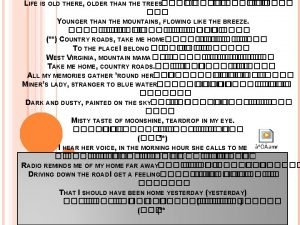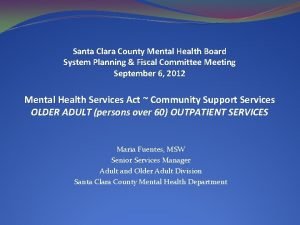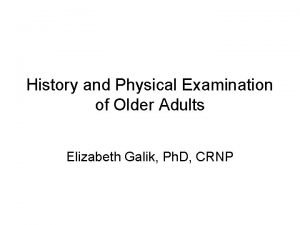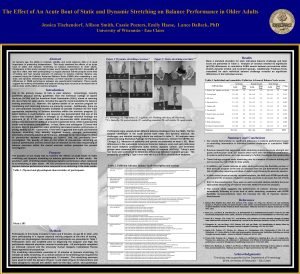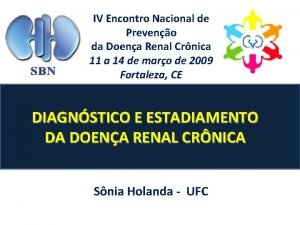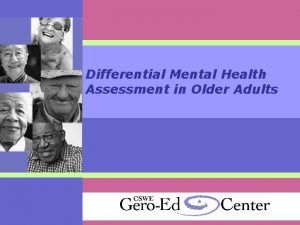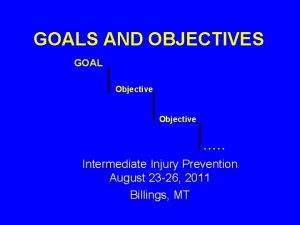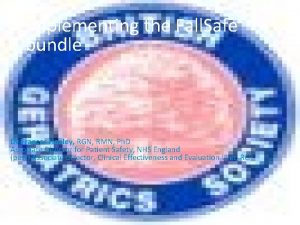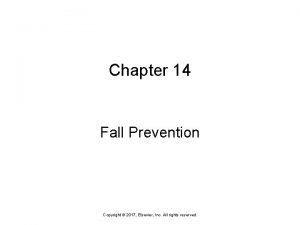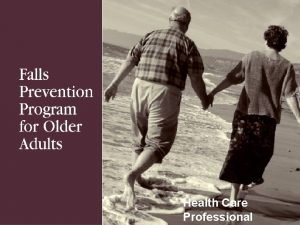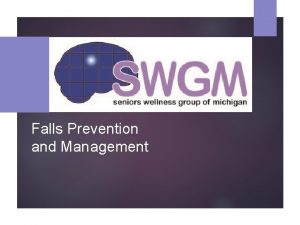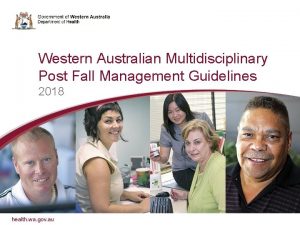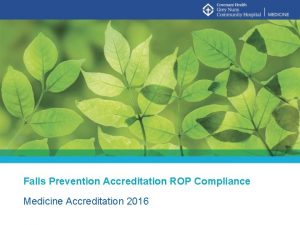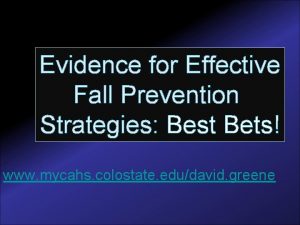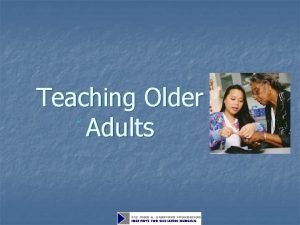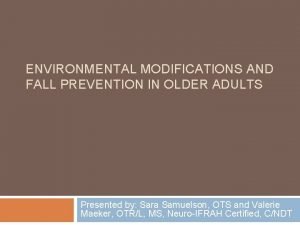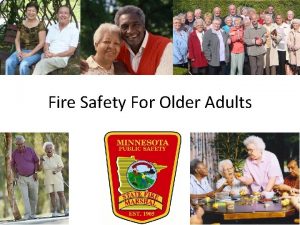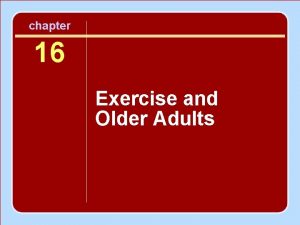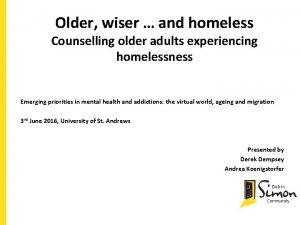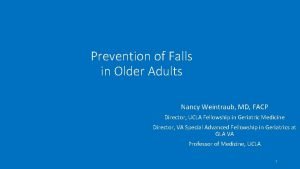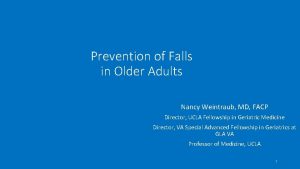Fall Prevention in Older Adults Aixa L Alvarez


















- Slides: 18

Fall Prevention in Older Adults Aixa L. Alvarez, MD Medical Director Metropolitan Methodist Hospital

Facts One out of three older adults fall each year. Falls are the leading cause of all fatal & non-fatal injuries in older adults. 20 - 30% of people who fall suffer moderate to severe injuries such as lacerations, hip fractures, head trauma. The most common fractures are spine, hip (95%), forearm, leg, ankle, pelvis, upper arm, & hand. Falls are the most common cause of TBI; ½ of fatal falls are from TBI.

Facts- in 2013 2. 5 million non-fatal falls were treated in the ED. 734, 000 of those were admitted. • • Direct medical costs of falls were $34 billion. 25, 500 older adults died from unintentional fall injuries. Men are more likely to die from a fall; 40% higher. Rates of fall related fractures is 2 x higher in women.

What increases the risk? Biological risk factors Mobility problems due to muscle weakness or balance problems Chronic health conditions such as arthritis and stroke Vision changes and vision loss Loss of sensation in feet

What increases the risk? Behavioral risk factors Inactivity Medication side effects and/or interactions Alcohol use

What increases the risk? Environmental risk factors Home and environmental hazards (clutter, poor lighting, etc. ) Incorrect size, type, or use of assistive devices (walkers, canes, crutches, etc. ) Poorly designed public spaces

Fall Prevention Exercise regularly- balance & strength Manage Hypotension Optimize home safety Review medications Check vision Address any foot problems/ generalized weakness Supplement Vitamin D/ Calcium

Exercise To reduce falls, exercises MUST focus on: improving balance and strength be progressive (get more challenging over time) be practiced for at least 50 hours. ie, taking a 1 -hour class 3 times a week for 4 months, or a 1 -hour class 2 times a week for 6 months.


Postural Hypotension A drop in blood pressure due to a change in position, which causes a temporary reduction in blood flow & therefore a shortage of oxygen to the brain. Symptoms- lightheadedness or dizziness, feeling about to faint/ pass out, headaches, blurry/ tunnel vision.

Postural Hypotension Causes- High blood pressure, DM, heart failure, atherosclerosis, medications (diuretics, anti-HTN, anti -depressants), dehydration, alcoholism, prolonged bed rest. , anemia. When- supine to sit, sit to supine, in the morning, after a large meal or alcohol, during exercise, when straining.

Postural Hypotension Managing/ Preventing- get out of bed slowly, take your time when changing positions, review your meds with your health care provider, sit down while showering, dressing or working in the kitchen, drink 6 -8 glasses of water each day, wear compression stockings

Floors o Arrange furniture so that there is a clear path o Remove all rugs or secure them properly o Coil or tape cords/ wires along the wall o Clear away stacks/ piles/ objects on the floor o Wear shoes both inside & outside the house

Stairs & Steps Clear stacks/ piles/ objects off the stairs Fix loose or uneven steps Have good lighting over the staircase Put in a light switch at the top & bottom of the stairs If carpeted, make sure it is firmly attached Fix loose or broken handrails Paint a contrasting color on the top edge of all the steps

Kitchen & Bathroom Keep items you use most on the lower shelves Use a steady step stool with a grab bar, never use a chair Put a non-slip rubber mat in your shower/ tub Install grab bars next to & inside the bathtub & next to the toilet

Bedrooms Place a lamp close to the bed within reach Clear a path from your bed to the bathroom Place a nightlight along that path Keep a phone and emergency numbers near by Consider wearing an alarm device that will bring help in case you are unable to get up

Where to go… Outpatient services Acute Inpatient Rehab Home Health services Community based programs

THANK YOU!
 Primary prevention secondary prevention tertiary prevention
Primary prevention secondary prevention tertiary prevention Life is older older than the trees
Life is older older than the trees Older adults mental health
Older adults mental health Physical examination conclusion
Physical examination conclusion Dynamic stretching for older adults
Dynamic stretching for older adults Mental health and older adults
Mental health and older adults Older adults
Older adults Mental health and older adults
Mental health and older adults Covids older adults
Covids older adults Altered cognition in older adults is commonly attributed to
Altered cognition in older adults is commonly attributed to Examples of smart goals for fall prevention
Examples of smart goals for fall prevention Fallsafe care bundle
Fallsafe care bundle Chapter 14 fall prevention
Chapter 14 fall prevention Fall prevention interventions
Fall prevention interventions Fall prevention quiz
Fall prevention quiz Fall prevention interventions
Fall prevention interventions S-p-l-a-t-t fall prevention
S-p-l-a-t-t fall prevention Fall prevention occupational therapy
Fall prevention occupational therapy 5 ps of fall prevention
5 ps of fall prevention

